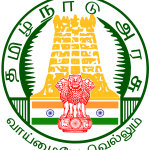
1. For what reason Pandit Ishwar Chandra was given the title – “Vidyasagar” ?
A) Due to his excellent performance in Sanskrit studies and philosophy
B) Support to Widow Remarriage Act
C) Against Child marriage
D) His social works
Explanation : Ans : (A)
Ishwar Chandra Vidyasagar :
He was the 19th century intellectual.
He was perhaps the first Indian reformer to put forward the issues of women.
He was a polymath who reconstructed the modern Bengali alphabet and initiated path breaking reform in traditional upper caste Hindu society.
He studied Sanskrit grammar, literature, vedanta philosophy,
logic, astronomy, and Hindu law for more than 12 years at Sanskrit college in
Calcutta, and received the title of
Vidyasagar – Ocean of Learning – at the age of just 21
due to his excellent performance in Sanskrit studies and philosophy.
Reforms by Ishwar Chandra :
In 1850, Vidyasagar protested against child-marriage.
All his life he campaigned against polygamy.
He was also deeply interested in the education of women. As a Government Inspector of Schools, he organised thirty-five girls schools, many of which he ran at its own expense.
As a Secretary to the Bethune School, he was one of the pioneers of higher education for women.
On October 14, 1855, Vidyasagar presented a petition to the Government of India praying for early passing a law to remove all obstacles to the marriage of Hindu widows and to declare the issue of all such marriages to be legitimate.
On July, 16,1856, The Hindu Widow’s Remarriage Act, known as Act XV, was passed.
2. A member of a State Public Service Commission can be appointed and removed respectively by
A) Governor, Governor
B) Governor, President
C) President, Governor
D) President, President
Explanation : Ans : (B)
Parallel to the Union Public Service Commission (UPSC) at the Centre, there is a State Public Service Commission (SPSC) in a state. The same set of Articles (i.e., 315 to 323 in Part XIV) of the Constitution also deal with the composition, appointment and removal of members, power and functions and independence of a SPSC.
Composition :
A State Public Service Commission consists of a chairman and other members appointed by the governor of the state. The Constitution does not specify the strength of the Commission but has left the matter to the discretion of the Governor. Further, no qualifications are prescribed for the commission’s membership except that one-half of the members of the commission should be such persons who have held office for at least ten years either under the government of India or under the Government of a state. The Constitution also authorises the governor to determine the conditions of service of the chairman and members of the Commission.
The chairman and members of the Commission hold office for a term of six years or until they attain the age of 62 years, whichever is earlier (in the case of UPSC, the age limit is 65 years). However, they can relinquish their offices at any time by addressing their resignation to the governor.
The governor can appoint one of the members of the SPSC as an acting chairman in the following two circumstances.
a) When the office of the chairman falls vacant; or
b) When the chairman is unable to perform his functions due to absence or some other reasons.
The acting chairman functions till the person appointed as chairman enters on the duties of the office or till the chairman is able to resume his duties.
Removal :
Although the chairman and members of a SPSC are appointed by the governor, they can be removed only by the president (and not by the governor). The president can remove them on the same grounds and in the same manner as he can remove a chairman or a member of the UPSC. Thus, he can remove him under the following circumstances :
a) If he is adjudged an insolvent (i.e., has gone bankrupt); or
b) If he engages, during his term of office, in any paid employment outside the duties of his office; or
c) If he is, in the opinion of the president, unfit to continue in office by reason of infirmity of mind or body.
In addition to these, the president can also remove the chairman or any other member of SPSC for misbehaviour. However, in this case, the president has to refer the matter to the Supreme Court for an enquiry. If the Supreme Court, after the enquiry, upholds the cause of removal and advises so, the president can remove the chairman or a member. Under the provisions of the Constitution, the advise tendered by the Supreme Court in this regard is binding on the president. However, during the course of enquiry by the supreme court, the governor can suspend the concerned chairman or member, pending the final removal order of the president on receipt of the report of the Supreme Court.
3. The resolving power of normal eye is
A) 100 B) 1,000
C) 650 D) 10
Explanation : Ans : (A)
Resolving power is the capacity of an object to resolve two points which are close together.
The resolving power of human eye is 100 .
4. What is the unit of momentum ?
A) Kgms–1 B) Newton
C) Kgms D) Kgm–1s–1
Explanation : Ans : (A)
The unit of momentum is the product of the units of mass and velocity.
Mass is measured in kg and velocity in ms–1, therefore, the SI unit of momentum will be kgm/s (or) kgms–1.
5. The compound which is called ‘Common salt’ is
A) NaCl B) CaCl2
C) AlCl3 D) LiCl
Explanation : Ans : (A)
Sodium chloride (NaCl) is also known as Common or Table Salt. It is formed after the reaction between sodium hydroxide and hydrochloric acid. It is a neutral salt. The pH value of sodium chloride is about 7.





